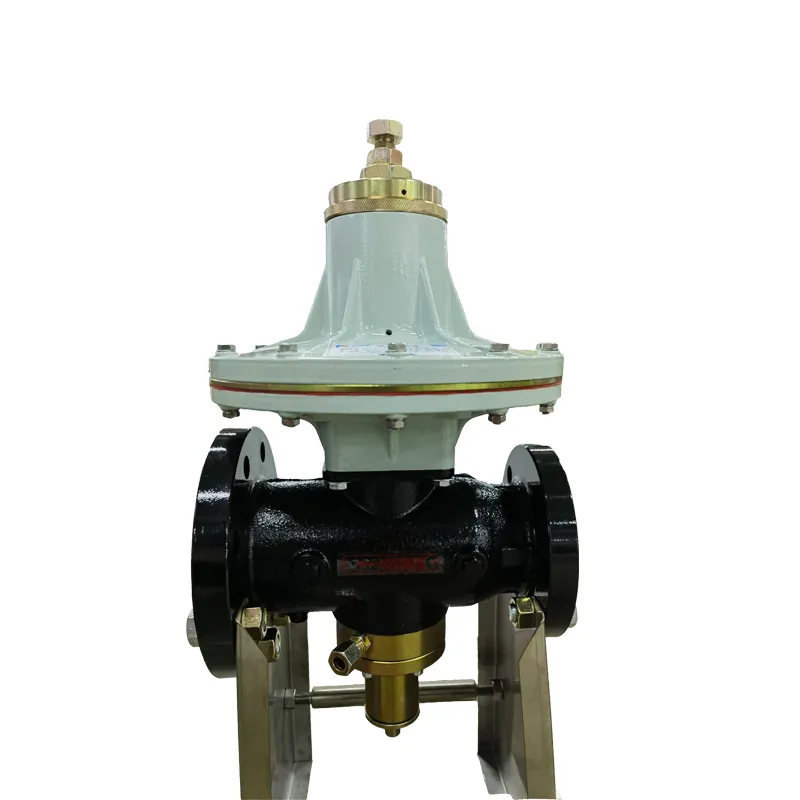
Dec . 16, 2024 06:57
Back to list
محطة تخفيض ضغط الغاز الطبيعي
Understanding Natural Gas Pressure Reduction Stations
Natural gas is one of the most vital sources of energy in the world. Its versatility and efficiency make it popular for domestic, industrial, and commercial applications. However, as natural gas travels through pipelines from production sites to consumers, it must be managed carefully to ensure safety, reliability, and efficiency. One crucial component in this process is the natural gas pressure reduction station. This article explores the significance, operation, and benefits of these facilities.
What is a Natural Gas Pressure Reduction Station?
A natural gas pressure reduction station is a facility designed to reduce the pressure of natural gas as it flows through a pipeline. High-pressure gas transported over long distances can be dangerous if not properly managed. These stations help to safely lower the gas pressure to an appropriate level for distribution to homes and businesses.
Typically, the natural gas is transported through transmission pipelines at pressures ranging from 200 to 1,500 psi (pounds per square inch). By the time the gas reaches distribution networks, it must be reduced to about 60 psi or even lower, depending on local requirements. Pressure reduction stations are strategically located along the pipeline route to ensure that gas pressure is decreased appropriately at various stages of delivery.
How Do Pressure Reduction Stations Work?
Pressure reduction stations utilize specialized equipment designed to manage gas flows safely. The primary components of a pressure reduction station include
1. Control Valves These are critical in managing the pressure reduction process. As gas enters the station at high pressure, control valves help to regulate the flow and allow the pressure to drop to the desired level.
.
3. Safety Devices To ensure safety, pressure reduction stations are equipped with safety devices that can shut down operations in case of an emergency. This includes pressure relief valves that prevent excessive pressures from causing damage or risking public safety.
محطة تخفيض ضغط الغاز الطبيعي

4. Heater Systems In some cases, gas may be heated before being distributed. This is particularly important in colder climates where low temperatures can cause natural gas to condense, leading to operational issues.
Importance of Pressure Reduction Stations
The importance of natural gas pressure reduction stations cannot be overstated. They play a critical role in ensuring the safe and efficient delivery of natural gas to end-users. Key benefits include
- Safety By regulating the pressure, these stations help to prevent accidents that could arise from high-pressure gas escaping into the atmosphere. This is crucial in protecting both human life and the environment.
- Efficiency Proper pressure management ensures that gas flows smoothly through the pipeline, reducing the likelihood of disruptions and improving overall system efficiency.
- Reliability Pressure reduction stations are key to maintaining a steady supply of gas. They ensure that fluctuations in demand do not adversely affect the supply chain.
- Environmental Protection By preventing gas leaks caused by overpressurization, these stations contribute to reducing greenhouse gas emissions and supporting environmental sustainability efforts.
Conclusion
Natural gas pressure reduction stations are essential infrastructure components that facilitate the safe and reliable delivery of gas to consumers. Through their sophisticated systems of control valves, monitoring devices, and safety mechanisms, they ensure that gas reaches homes and businesses at a safe pressure. As the demand for natural gas continues to grow, the importance of these stations in supporting energy needs while prioritizing safety and efficiency becomes increasingly significant. Investing in and maintaining these facilities is vital for a sustainable energy future, ensuring that natural gas can continue to play a pivotal role in the global energy mix.
Next:
Latest news
-
Safety Valve Spring-Loaded Design Overpressure ProtectionNewsJul.25,2025
-
Precision Voltage Regulator AC5 Accuracy Grade PerformanceNewsJul.25,2025
-
Natural Gas Pressure Regulating Skid Industrial Pipeline ApplicationsNewsJul.25,2025
-
Natural Gas Filter Stainless Steel Mesh Element DesignNewsJul.25,2025
-
Gas Pressure Regulator Valve Direct-Acting Spring-Loaded DesignNewsJul.25,2025
-
Decompression Equipment Multi-Stage Heat Exchange System DesignNewsJul.25,2025

